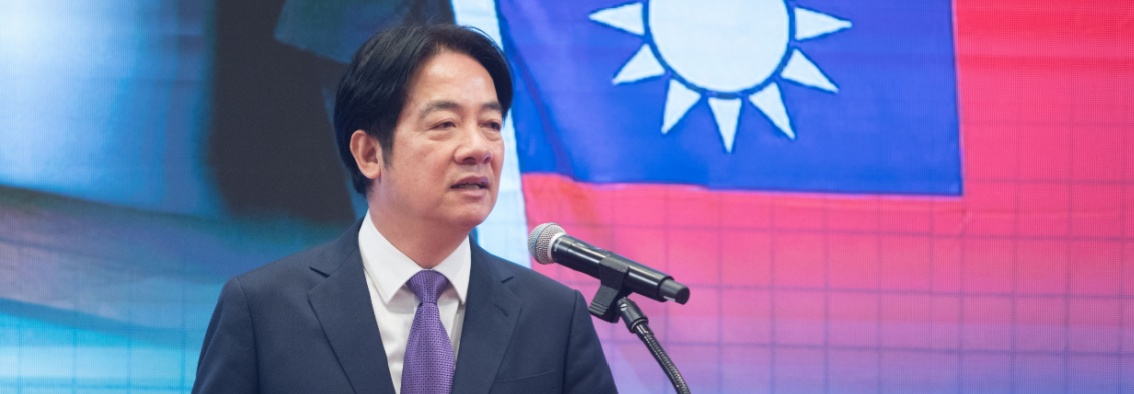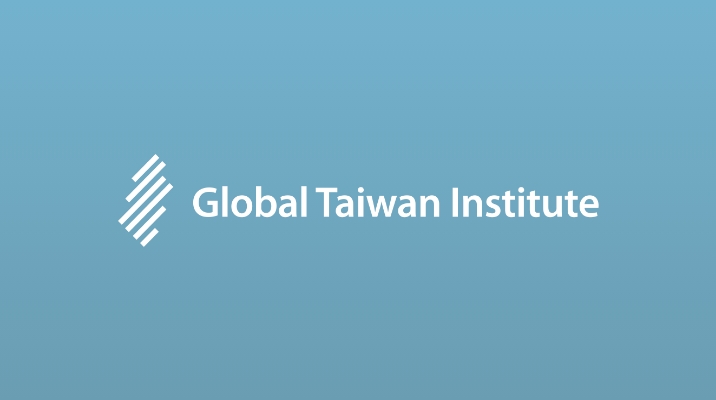After the January 2024 national elections in Taiwan, the Democratic Progressive Party (DPP, 民進黨) retained the presidency but lost control of the Legislative Yuan (LY, 立法院). With 60 combined seats, the Kuomintang (KMT, 國民黨)-Taiwan People’s Party (TPP, 民眾黨) coalition now holds the advantage over the DPP’s 51 seats, giving it enough leverage to downplay and block DPP President Lai Ching-te’s (賴清德) policy proposals.
The DPP’s biggest attempt to shift the balance of power in the LY—an unprecedented recall campaign in summer 2025—turned into a bitter political defeat. Initiated by civil society groups and openly endorsed by President Lai, the “Great Recall” (大罷免) campaign sought to unseat 31 KMT legislators on the grounds of obstructing bills and budgets. However, by the time all of the recall votes were counted on August 23, not a single KMT legislator had lost their seat. The controversial campaign inadvertently strengthened the KMT-TPP opposition. Riding on the momentum of victory, the KMT Chairman issued a statement that same day calling for unity in Taiwan, accusing the Lai Administration of pursuing dictatorship and focusing on political infighting while neglecting economic development.
Under these circumstances, the prospect of altering the balance in the LY prior to the next legislative elections in 2028 seems unlikely. After the failed recall attempt, the seat distribution in the LY remained unchanged, with the KMT-TPP coalition continuing to hold a majority. In addition, the fact that none of the 31 KMT legislators were recalled in the recent recall attempt suggests that it would be difficult for the Lai Administration to initiate any more recalls during the remainder of its term.
On the same day as the second round of recalls, on August 23 Taiwanese voters entered a critical referendum to decide the future of the island’s nuclear energy program. Though the number of overall voters failed to reach the minimum threshold needed to execute the measure, over 74 percent of those casting ballots (more than 5 million voters) supported restarting the Maanshan Nuclear Power Plant. In the 1980s, nuclear energy supplied more than half of Taiwan’s electricity demand, but by May 2025 the ruling DPP government had completed a phase-out of all nuclear energy. Therefore, the nuclear energy referendum initiative—launched in May by the TPP with the KMT’s backing—sought to reactivate the plant.
Anti-nuclear policy has long been a core feature of the DPP’s platform. Since the late 1980s, the DPP has tied this stance to social movements, and under former President Tsai Ing-wen’s (蔡英文)administration, the slogan of a “nuclear-free homeland” was formally codified into law. The party’s main argument centers on safety risks, yet in practice, nuclear energy has continued to enjoy significant public support.
The Lai Administration was fortunate that the referendum result was rendered invalid, as it failed to meet the legal threshold: by law, the support of at least one-quarter of all eligible voters (about 5 million “yes” votes in this case) is required for passage. Yet, the proposal garnered only 4.34 million “yes” votes, falling short of the 5 million required.
Lai’s Declining Approval Ratings
The DPP’s challenges do not stop there, as recent public opinion surveys revealed alarmingly low approval ratings for President Lai. A TVBS poll released on August 11, covering over 1,044 respondents, showed that only 28 percent of respondents were satisfied with his performance, down from 32 percent in May. Another survey conducted by the Taiwan Public Opinion Foundation between August 4-6 (with 1,079 participants) recorded Lai’s approval rating at its lowest since he took office in May 2024: with just 33.3 percent expressing satisfaction, while 54.4 percent disapproved.
Many observers argue this decline reflects voter fatigue with Lai’s repeated emphasis on a narrative of resistance to China, as opposed to focusing more on pressing domestic issues such as the economy and people’s livelihoods. Compounding this, the Lai Administration has also faced sharp criticism from the opposition and certain domestic industries after the United States, under the second Trump Administration, imposed a 20 percent tariff on Taiwanese exports—which is higher than the 15 percent rate applied to the island’s neighbors, namely Japan and South Korea.
Slim Chances for a Lai Recall
These combined factors are steadily eroding President Lai’s domestic legitimacy, posing a significant challenge to his governing capacity just over a year into his term. Amid such mounting difficulties, however, Lai is unlikely to consider resignation as an option. In Taiwan’s history, no president has ever chosen to step down. Even if the KMT-TPP alliance sought to pressure Lai through a recall, it is highly improbable that such an effort could be successful.
Article 2 of Taiwan’s Additional Articles of the Constitution stipulates: “Recall of the president or the vice president shall be initiated upon the proposal of one-fourth of all members of the Legislative Yuan, and also passed by two-thirds of all the members.” As noted above, the opposition alliance of KMT and TPP holds a combined total of 60 seats, which are only nine more than the DPP’s 51. This slim margin makes it virtually impossible to secure the two-thirds threshold required to advance a recall motion.
Meanwhile, President Lai has shown no indication of considering resignation. Instead, following the unsuccessful recall campaign, his discourse is centered on fostering meaningful dialogue and steering clear of direct confrontation with the opposition; however, he has proposed no concrete actions moving forward.
At the same time, he has opted for a sweeping cabinet reshuffle to address the current crisis. A total of 10 new appointments were made in this shake-up, including officials in key positions including Kung Ming-hsin (龔明鑫), Minister of Economic Affairs; Yeh Chun-hsien (葉俊顯), Minister of the National Development Council; Lin Yi-jing (林宜敬),Minister of Digital Affairs; and Li Wen (李問) along with Vincent Chao (趙怡翔), Deputy Secretary-Generals of the National Security Council. A source close to the president revealed that the cabinet reshuffle was aimed at strengthening public resilience amid current turbulence (particularly the tariff shock), deepening ties with the United States, and addressing mounting political and military pressure from China. Nevertheless, there has been no sign that the above knots will be effectively untied. The reshuffle replaces old officials with new ones, but structural issues, such as the DPP’s political deadlock between the KMT-TPP grip, remain unchanged, rendering breakthrough approaches unlikely to materialize.
The Survival Politics: Finding Ways Forward
Based on President Lai’s call for dialogue with the opposition and his decision to overhaul the cabinet, several predictions can be made about his potential political moves. First, the DPP leader may consider an outreach and compromise with the KMT and TPP in exchange for a short-term period of political calm. Given the strong public support for restarting the Third Nuclear Power Plant, the DPP could concede to restarting the plant, thereby winning the voters’ favor while easing opposition pressure. In return, President Lai might demand that the KMT refrain from blocking his proposal (first made in February) to raise defense spending above 3 percent of gross domestic product. Though difficult, such a compromise could allow Lai to demonstrate to voters that he can work effectively with rival parties to uphold Taiwan’s security.
At the same time, the appointment of a new Minister of Economic Affairs signals the government’s determination to deepen trade negotiations with Washington in pursuit of a more favorable deal for Taiwan. This prospect appears realistic, as US Secretary of Commerce Howard Lutnick revealed on September 11 that both sides were close to reaching an agreement. However, significant hurdles remain before a formal announcement can be concluded. To finalize a deal, Taipei will likely have to make substantial concessions: such as opening its market to goods produced under American regulatory standards, importing American agricultural products, or increasing arms procurement from the United States, and accepting Trump’s demand for a “50-50” split in semiconductor production between Taipei and Washington. The difficulty lies in the fact that importing US agricultural goods would impact Taiwan’s food and farming sectors, while other key industries, particularly automobiles and semiconductors, could also endure negative effects. Moreover, with repeated attempts to increase defense spending despite legislative roadblocks, President Lai must prudently weigh his policies in order to avoid inflaming the already precarious situation in which he finds himself.
Taiwan will hold local elections next year to select leaders and councils across multiple levels of government. These elections are widely seen as a barometer of public trust in the DPP government and an informal “referendum” on Lai’s leadership. Furthermore, key local posts, particularly mayoral positions in major cities, could serve as stepping stones for presidential hopefuls in 2028. The party that secures an advantage in the local races will gain a decisive edge in building political momentum, mobilizing voters, and preparing for the national elections in 2028.
Recognizing this importance, Lai is almost certain to prioritize efforts to win over voters by calling for “unity.” In fact, this is the very approach he has been pursuing through the “Ten Lectures on National Unity” (團結國家十講) since June, aimed at uniting the people, political parties, and the nation as a whole in his vision of promoting Taiwan’s progress while holding out against external threats. However, this effort appears to have been abandoned after just four speeches, as the public response has not met expectations. It appears the government may have spotted the necessity to postpone the speeches in order to refine the content.
In a nutshell, in the face of mounting challenges, President Lai has sought to improve the situation by reshuffling his cabinet and calling for dialogue with the opposition. These actions demonstrate Lai’s understanding that political stalemate and diminishing approval ratings have hindered his ability to govern efficiently. In the future, Lai may seek to win back trust among the public and alleviate partisan tensions through fostering receptiveness and dialogue. On this basis, he is expected to pursue a fragile compromise with the KMT, intensify trade negotiations with the United States, and expand voter outreach efforts centered on national unity. The road ahead will be fraught with difficulties, and it remains to be seen whether Lai can engineer a breakthrough—or whether he will remain a lame duck until the 2028 general election.
The main point: Taiwanese President Lai Ching-te is facing a hostile legislature, falling approval ratings, and trade pressure from Washington, reshaping his desired role from that of an ambitious reformer to that of a cautious survivor. To address these challenges, President Lai could decide to broker a compromise with the KMT on nuclear policies to gain support for his own proposals; intensify trade relations with the United States; or highlight unity to appeal to voters.





